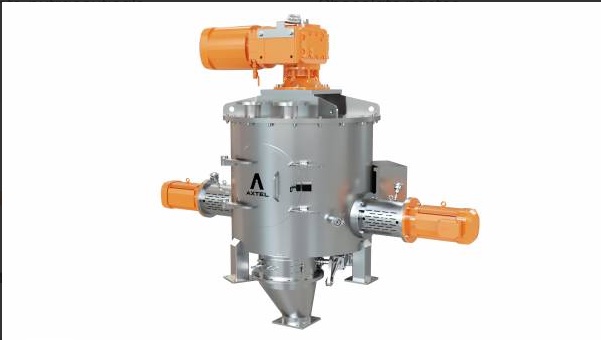Technological improvements in the food extrusion business have been rapidly developed over the past few years, especially in the area of mixer machines for manufacturing lines. These advancements have greatly influenced the prosperity of the industry as a whole. In addition to streamlining production, they have reduced expenses, guaranteed constant quality, and created opportunities for novel food products to be created.
Understanding Mixer Applications
The state of the components being mixed significantly impacts the type of mixer that will be used in food extrusion, such as vertical mixers. These phases can be liquid-liquid, liquid-solid, or solid-solid. Thankfully, contemporary mixing methods are versatile and frequently share similar functions. This suggests that combining different mixing strategies may be possible for some applications. However, choosing the best technology is essential to guaranteeing process effectiveness.
Vertical Mixers
The two upright screws that bring the raw materials to the top of the mixer and then allow them to descend to the base, where they can either be channeled to the extruder or be lifted again, are the main design feature of vertical mixers. The vertical mixing machine can be used to blend different proportions of small amounts of raw ingredients, lipids, and fluids.
Vertical mixers, a kind of powder or flour mixer machine, are specially made for use with food extruders and have a great capacity for mixing a broad range of ingredients. A central, vertical agitator revolves inside a cylindrical chamber to power vertical mixers. The shape of the agitator encourages a comprehensive, three-dimensional mixing motion, guaranteeing a consistent blend of even the trickiest dry components. The final extruded food item’s constant texture and quality are the result of this careful mixing.
Vertical mixers have several other advantages beyond their outstanding mixing power. They frequently include characteristics in their design that improve safety and use. For example, many vertical mixers have hygienic, easily cleanable discharge systems that reduce the danger of contamination and product loss. Furthermore, they are perfect for space-constrained buildings because their vertical orientation frequently results in a reduced footprint.
Horizontal Mixing Machines
The horizontal mixers, in contrast to the vertical mixers, feature a set of blades fixed on a horizontal rotor. A set of knives is mounted on the horizontal rotor, which moves the ingredients around the machine while mixing and spinning them. A hydraulic shear is created when the rotors spin quickly, breaking up the particles into tiny droplets and ejecting the components into the surrounding mixture. A constant flow of ingredients entering the machine is encouraged by the additional batches that enter the rotator as more ingredients are ejected from it. These horizontal machines release ingredients from the bottom of the containers, just like the vertical machines do, while some may release ingredients from the top.
Beyond Simple Mixing: The Advantages of Mixers in Food Production
Because of the many advantages mixer machines provide to both manufacturers and customers, they are becoming more and more common in the food extrusion industry.
Advantages for manufacturers:
Automation
In contrast to traditional machines that require human operation, this device’s functioning is simple and automated and presents fewer challenges. Handling is minimized because the machine is constructed to order with the proper temperature and pressure settings.
Simple to clean and maintain
Contemporary mixing machines are engineered with built-in self-cleaning features that minimize the risk of contamination among the combined ingredients. Furthermore, the function lowers labor-related expenses.
Versatility
A single mixing line can combine a range of ingredients and raw materials. A horizontal mixing machine, suitable for blending dry and wet components of different sizes, also makes this possible. This implies that anyone utilizing a food extruder to manufacture food can benefit from the device.
Candies, pet foods, gels, and other viscous formulations are a few examples of foods that can be produced with the use of mixing machines.
Manufacturing Of High-Quality Products
The ingredients are properly blended by the mixing machine, guaranteeing consistency in the finished product’s texture and degree of blending. Furthermore, the device is connected to the food extruder, allowing the finished product to be discharged into the extruder and minimizing handling and contamination. Because the machine weighs the ingredients accurately, unlike other traditional methods, it also preserves the product’s nutritional integrity.
Suitable For Large-Scale Producers
Using a mixing machine is convenient and cost-effective for combining components in huge amounts, as in large manufacturing enterprises. It guarantees speedier production while minimizing leakage losses.
Effectiveness
Unlike traditional mixing machines, the mixing device is efficient in that it guarantees a thorough mixing of the materials in a shorter amount of time. The mixing device aids in the removal of significant problems, including spills, labor expenses, physical labor, and other large-scale issues.
Thanks to the above evolutionary breakthroughs in food mixing technologies, food makers have the potential to improve their overall production effects, increase production flexibility, improve efficiency, and improve product uniformity. Investing in these cutting-edge technologies will significantly increase manufacturing efficiency.



